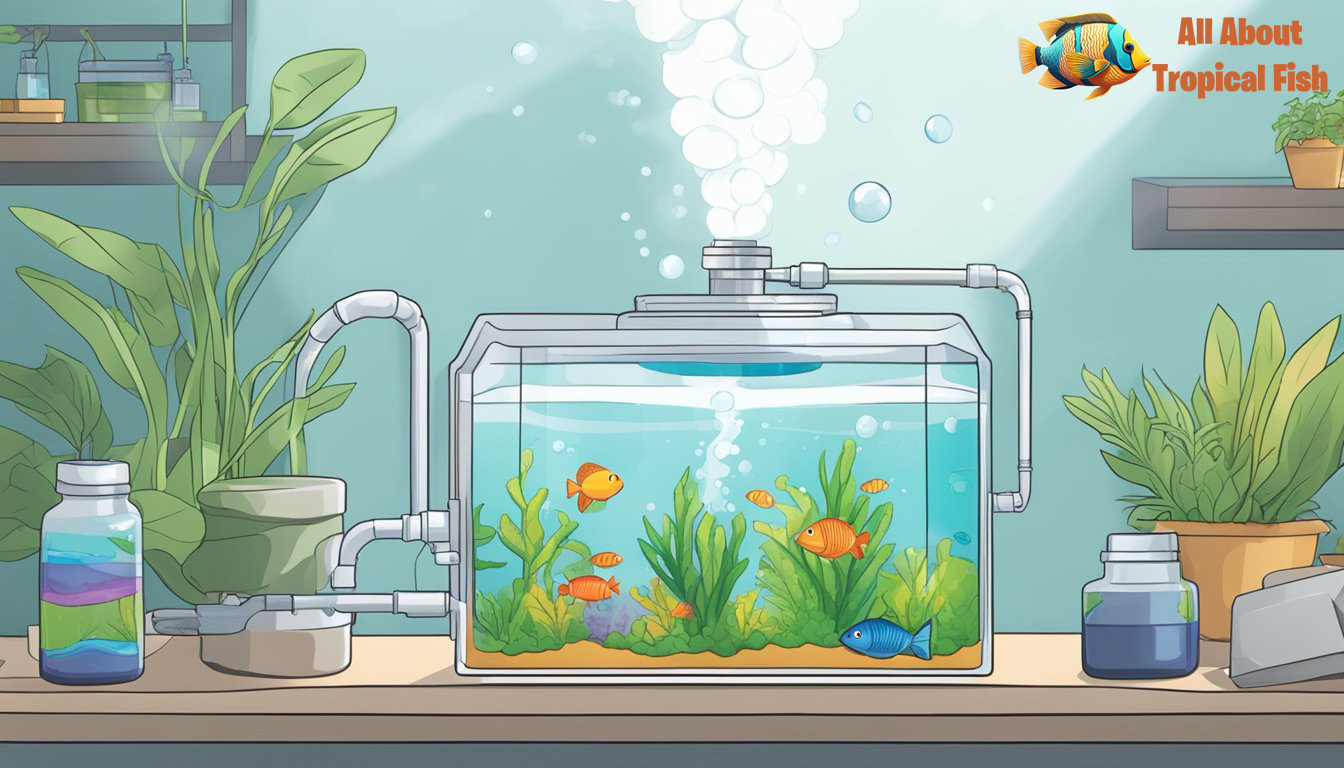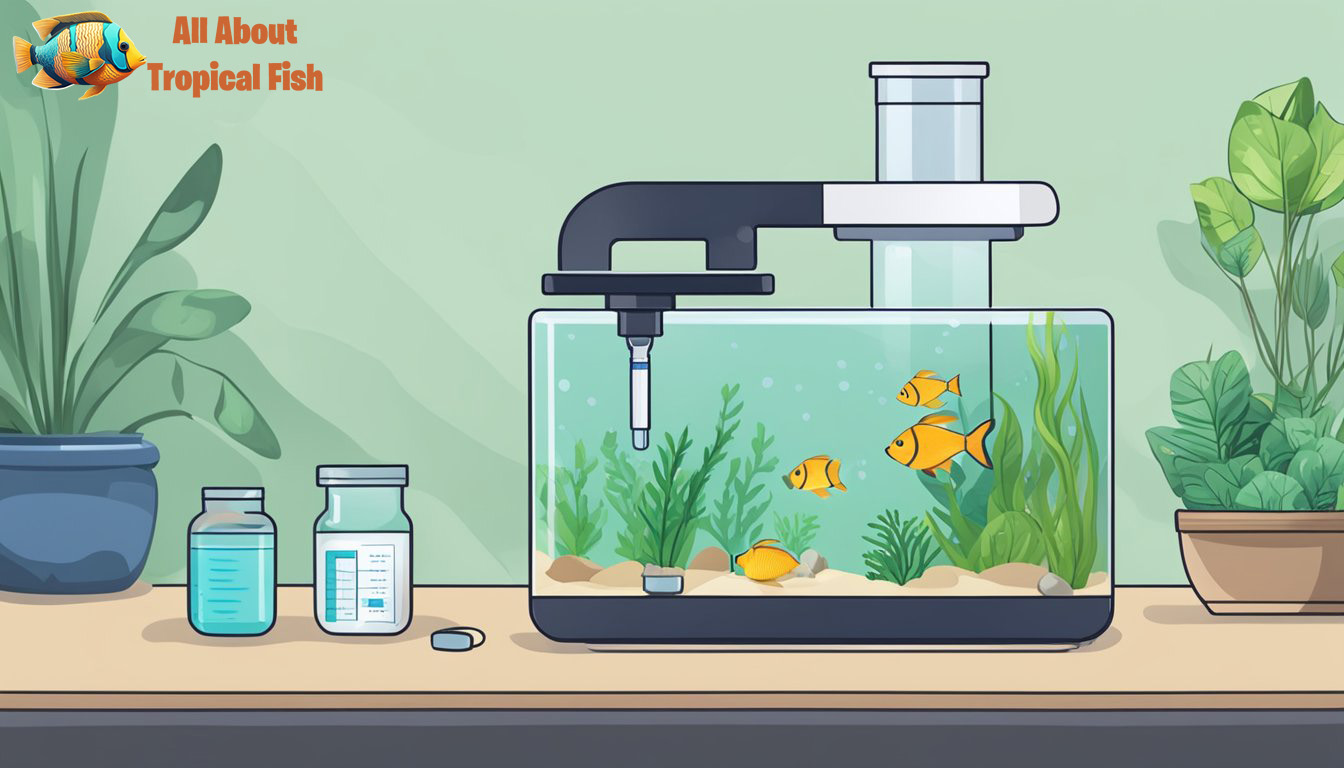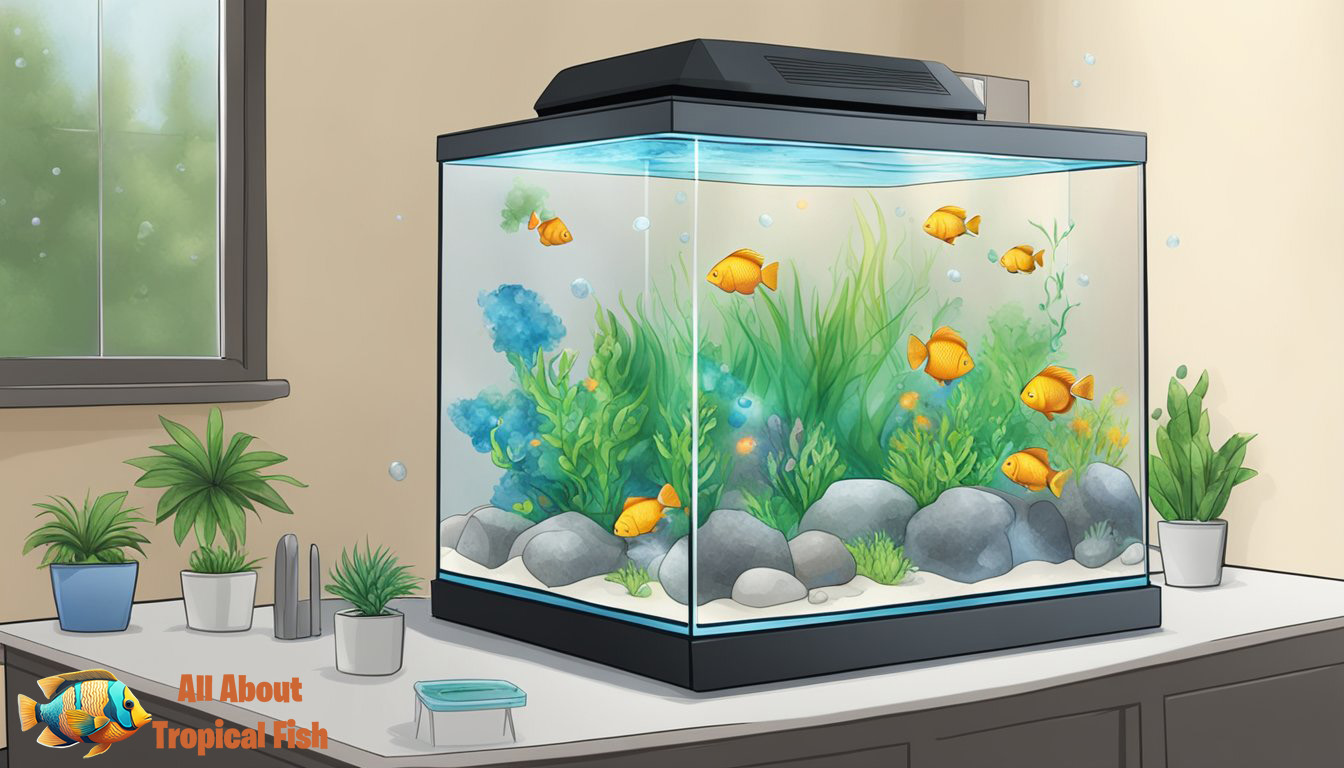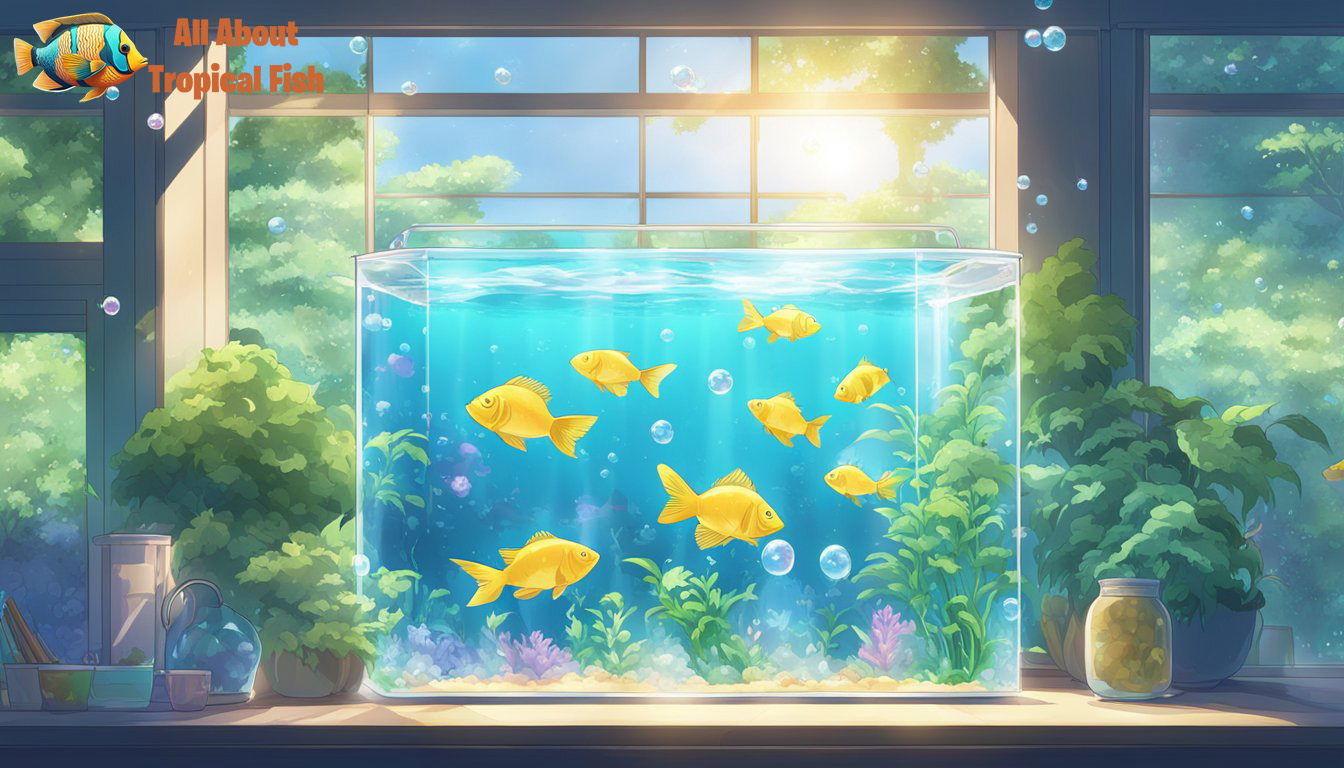Maintaining the proper pH level in your fish tank is crucial for the health and well-being of your aquatic pets. The pH level measures the acidity or alkalinity of the water, and even slight changes can have a significant impact. If you find that the pH in your aquarium is higher than the ideal range for your fish, reducing it gently and safely is important to avoid stressing your aquatic inhabitants.
There are several effective methods to lower the pH in an aquarium. You can use natural elements, like peat moss, driftwood, or almond leaves, which release tannic acids into the water, creating a more acidic environment over time. Alternatively, carbon dioxide systems can provide precise pH control and benefit plant life in your tank. These methods work gradually, helping to prevent sudden shifts in water chemistry that can harm fish.
Before making any adjustments, testing the current pH level is essential, so you understand the starting point. A high-quality aquarium water testing kit will give you accurate results. Once you know your tank’s pH level, you can plan the appropriate action to create the ideal conditions for your aquatic life. Remember, when adjusting pH levels, patience and small changes are key to ensuring a healthy aquarium environment.
Understanding PH in Fish Tanks

Maintaining the correct pH level in your aquarium is crucial for the health and well-being of your fish.
The Role of PH in Aquariums
PH represents how acidic or alkaline your aquarium water is, on a scale from 0 to 14, with 7 being neutral. Fish thrive in different pH ranges, so knowing the ideal pH for your specific fish species is vital. A pH that is too high (alkaline) or too low (acidic) can lead to stress and health problems for your aquatic life.
Factors Affecting PH Levels
Several factors can alter the pH in your aquarium:
- Tap water: The pH of your source water can have a significant impact on your tank’s pH.
- Substrate and decorations: Certain substrates and decorations, like coral or shells, can raise pH levels.
- Organic decay: Decaying plants and excess food contribute to lower pH.
- CO2 levels: Higher levels of carbon dioxide can lower the pH in your tank.
- Filtration: Some filters alter pH as water passes through them.
Assessing Your Aquarium’s PH Level

By assessing the water’s acidity or alkalinity, you can ensure a healthy environment for your aquatic life.
Testing PH in Your Fish Tank
To get started, you’ll need a high-quality aquarium water testing kit. These kits typically use either liquid reagents or test strips to measure pH:
Liquid Test Kits:
- Fill a test tube with a sample of your tank water.
- Add the indicated number of drops of the pH test solution.
- Cap the tube and shake it to mix the solution thoroughly.
- Compare the color of your sample to the kit’s color chart.
Test Strips:
- Dip the pH test strip into your aquarium.
- Hold it in the water for the time specified by the strip’s instructions.
- Remove it and compare the resulting color to the provided chart.
For both types of tests, ensure you follow the manufacturer’s instructions for the most accurate results.
Interpreting PH Test Results
Once you’ve tested the water, match the color of your test to the provided pH scale:
- pH Scale Range:
- A reading of 7.0 is considered neutral.
- Values lower than 7.0 indicate acidity.
- Values higher than 7.0 indicate alkalinity.
Most freshwater fish thrive in a pH range of 6.5 to 7.5, although specific species may require different conditions. If your pH levels are too high, you’ll need to take steps to reduce them to fall within the optimal range for your fish.
Natural Methods to Reduce PH

Natural methods offer a safe way to gradually reduce the pH to suitable levels, ensuring a stable environment for your fish and plants.
Using Driftwood
Adding driftwood to your aquarium can naturally lower the pH. As driftwood decomposes, it releases tannic acid, which gradually reduces pH levels. Before introducing driftwood:
- Prepare the driftwood: Boil it to remove any impurities and to speed up waterlogging.
- Monitor the pH: Keep an eye on pH levels as they can change due to the tannins being released.
Introducing Peat Moss
Peat moss is effective in lowering pH levels over time. To use peat moss:
- Place peat moss in your filter or in a mesh bag within the aquarium.
- Replace periodically, as its effectiveness reduces with time.
- Remember, peat moss can discolor water, so rinsing it before use may minimize this.
Incorporating Catappa Leaves
Catappa leaves, also known as Indian Almond Leaves, are a natural way to lower and stabilize pH. When using Catappa leaves:
- Add a few leaves to your tank and let them release tannins slowly.
- These leaves also provide anti-bacterial properties, benefiting your fish’s health.
- Replace the leaves once they’ve fully decomposed or lost their tannins.
Chemical Adjustments

When you need to lower the pH in your fish tank, using chemical adjustments can be an effective method. These come in various forms and it’s essential to use them correctly to maintain a healthy aquarium.
PH Reducing Products
PH reducing products are formulated to decrease the pH level in your aquarium. These products usually contain sulfuric or hydrochloric acid, which work by neutralizing alkaline substances in the water. Here’s a list of common pH reducing products:
- Liquid pH adjusters: These are concentrated acids and are added directly to your tank. Be sure to follow the instructions carefully, as overdosing can harm your aquatic life.
- pH adjusting powders: These are mixed with water before being added to the tank and allow for more gradual adjustments.
Proper Use of PH Adjusters
Using pH adjusters requires a careful approach to avoid harming your fish. Remember the following guidelines:
- Test pH Levels First: Before using any pH adjuster, always test your water with a reliable test kit to know the current pH level.
- Dose Correctly: Follow the manufacturer’s instructions on dosage, usually stated in terms of drops or teaspoons per gallon.
- Mix Well: Ensure that the pH adjuster is thoroughly mixed into the aquarium water for even distribution.
- Monitor: After application, continue to monitor your tank’s pH level to ensure it’s within the safe range for your aquatic life.
Maintaining Stable PH Levels

Maintaining a stable pH in your aquarium is essential for the health of your fish and plants. Consistency is key to preventing stress or harm to your aquatic inhabitants.
Regular Water Changes
Implementing routine water changes is the most straightforward approach to controlling pH levels. By replacing 10-15% of your tank’s water weekly, you remove excess nutrients that can cause pH swings. Ensure the new water’s temperature and composition match your tank’s parameters to prevent shock.
Monitoring PH Fluctuations
Closely monitoring pH levels is crucial for early detection of any changes. It’s recommended to test your water at least once a week using a reliable aquarium pH test kit. Keep a record of the results to track any trends or patterns that may indicate the need for action.
Long-term PH Stability Strategies
For long-term pH stability, consider these strategies:
- Utilize a substrate designed for your desired pH level.
- Add natural driftwood or peat to the aquarium to gradually release tannins, which can naturally lower the pH.
- CO2 systems: A carbon dioxide injection system provides precise pH control by adding CO2, which can lower the pH.
- Ensure your tank is clean to avoid organic matter decay, which can lower the pH. Regularly remove uneaten food and keep the filter clean.
Troubleshooting Common PH Issues

Monitoring pH in your fish tank is crucial for detecting issues. You’ll be able to tackle sudden changes and persistent high pH levels with the right approach and tools.
Handling Sudden PH Changes
Sudden shifts in pH can stress your fish, so immediate remediation is necessary. If you observe a spike, first test your water to confirm the pH levels. Common causes include overfeeding, decay of organic matter, or the introduction of new objects that alter pH.
- Water Changes: Start with a 20% water change using water that is the correct pH and temperature for your tank.
- Buffering Agents: Add a commercial pH buffer to stabilize your water’s pH after consulting an aquarium specialist about the suitable type.
- Review Tank Conditions: Check for recent additions to your tank that could cause fluctuations, such as substrate or decorations, and remove them if necessary.
Dealing with Persistent High PH
A consistently high pH needs a structured approach to lower it sustainably.
- Driftwood or Peat Moss: Introduce natural elements like driftwood or peat moss to your tank, which release tannins and naturally lower pH over time.
- Adjust Water Source: If you’re using tap water, it might be contributing to high pH. You can let the tap water sit for 72 hours to off-gas chlorine or use products that remove chlorine and other elements that contribute to high pH.
Remember, any adjustments to your tank should be gradual to prevent shocking your fish. Always acclimate your fish to changes in the water chemistry slowly.
Additional Tips and Considerations

Before diving into specific strategies, consider these points before making any decisions:
Choosing the Right Fish for Your PH
Different fish species thrive in different pH levels. Before adding fish to your aquarium:
- Research: Find out the preferred pH range for the fish you are interested in.
- Match: Choose fish whose natural pH preferences align with your aquarium conditions.
Considering Tank Mates and Decor
Tank mates and decorations can influence your tank’s pH:
Aquarium Décor:
- Driftwood can naturally lower the pH.
- Calcified decorations like coral or shells can raise the pH.
Tank Mates:
- Ensure that all species in the tank require similar pH levels.
- Balance your fish community to avoid stress, which can affect the tank’s pH indirectly.



Leave a Reply